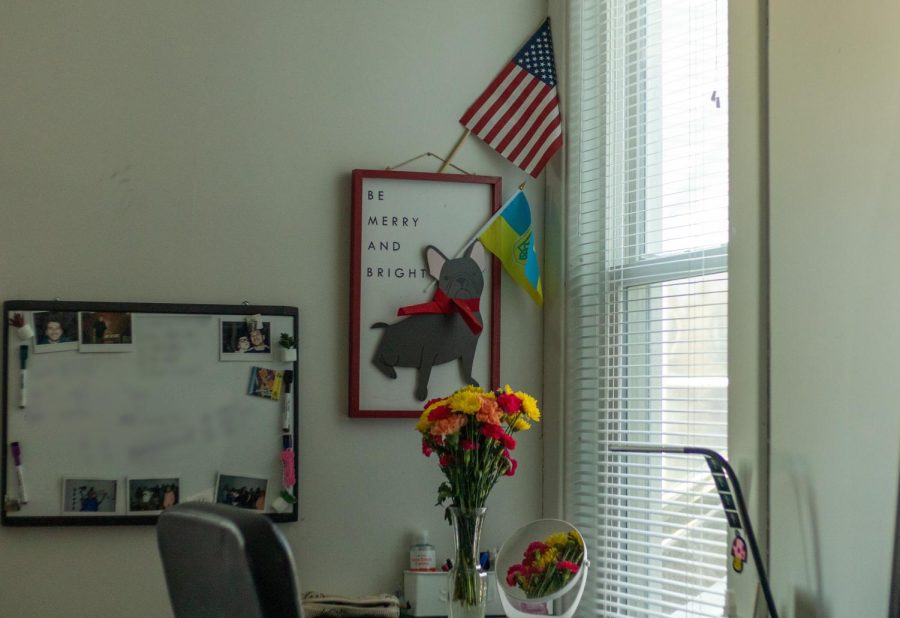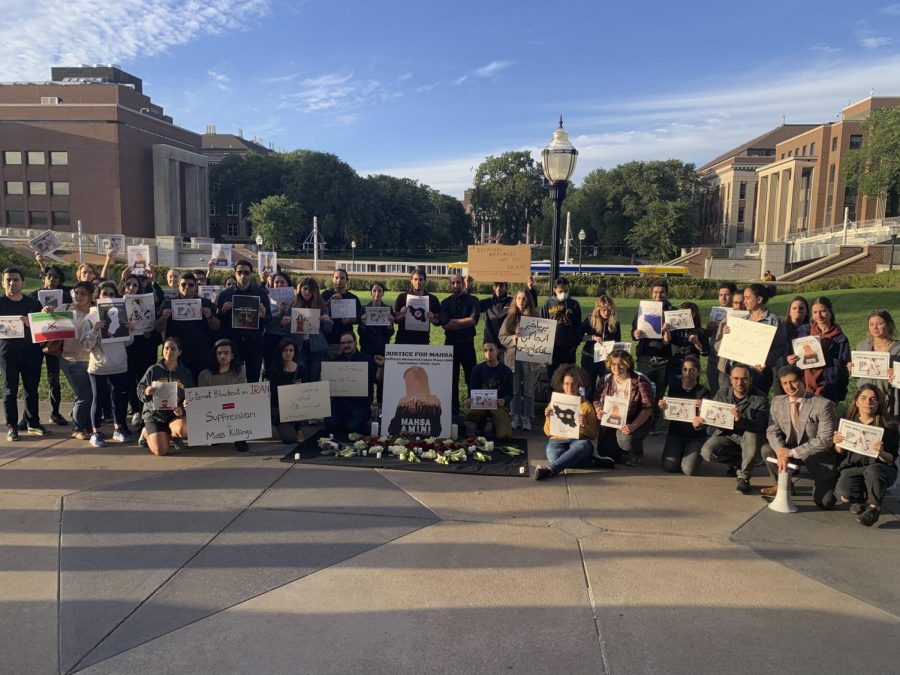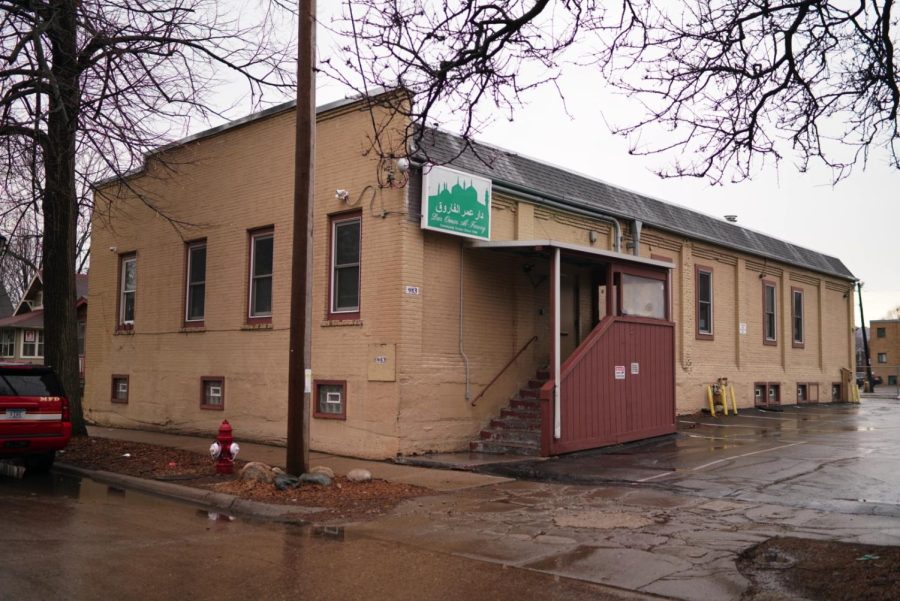L’AQUILA, Italy (AP) âÄî Rescue workers using bare hands and buckets searched frantically for students believed buried in a wrecked dormitory after Italy’s deadliest quake in nearly three decades struck this medieval city before dawn Monday, killing more than 150 people, injuring 1,500 and leaving tens of thousands homeless. The 6.3-magnitude earthquake buckled both ancient and modern buildings in and around L’Aquila, snuggled in a valley surrounded by the snowcapped Apennines’ tallest peaks. It also took a severe toll on the centuries-old castles and churches in the mountain stronghold dating from the Middle Ages, and the Culture Ministry drew up a list of landmarks that were damaged, including collapsed bell towers and cupolas. The quake, centered near L’Aquila about 70 miles northeast of Rome, struck at 3:22 a.m., followed by more than a dozen aftershocks. Firefighters with dogs and a crane worked feverishly to reach people trapped in fallen buildings, including a dormitory of the University of L’Aquila where a half- dozen students were believed trapped inside. After nightfall Monday, rescuers found a scared-looking dog with a bleeding paw in the half-collapsed dorm. Relatives and friends of the missing stood wrapped in blankets or huddled under umbrellas in the rain as rescuers found pieces of furniture, photographs, wallets and diaries, but none of the missing. The body of a male student was found during the daylight hours. “We managed to come down with other students but we had to sneak through a hole in the stairs as the whole floor came down,” said Luigi Alfonsi, 22, his eyes filling with tears and his hands trembling. “I was in bed âÄî it was like it would never end as I heard pieces of the building collapse around me.” Elsewhere in town, firefighters reported pulling a 21-year-old woman and a 22-year-man from a pancaked five-story apartment building where many students had rented flats. Amid aftershocks, survivors hugged one another, prayed quietly or tried to call relatives. Residents covered in dust pushed carts of clothes and blankets that they had thrown together before fleeing their homes. Slabs of walls, twisted steel supports, furniture and wire fences were strewn in the streets, and gray dust was everywhere. A body lay on the sidewalk, covered by a white sheet. Residents and rescue workers hauled debris from collapsed buildings by hand or in a bucket brigade. Firefighters pulled a woman covered in dust from her four-story home. Rescue crews demanded quiet as they listened for signs of life from inside. RAI television showed rescue workers gingerly pulling a man clad only in his underwear from a crumbled building. He embraced one of his rescuers and sobbed loudly as others placed a jacket around his shoulders. Although shaken and covered in dust, the man was able to walk. Some 10,000 to 15,000 buildings were either damaged or destroyed, officials said. L’Aquila Mayor Massimo Cialente said about 100,000 people were homeless. It was not clear if his estimate included surrounding towns. Premier Silvio Berlusconi said in a TV interview that more than 150 people were killed and more than 1,500 were injured. He had already declared a state of emergency, freeing federal funds for the disaster, and canceled a trip to Russia. The quake hit 26 towns and cities around L’Aquila. Castelnuovo, a hamlet of about 300 people southeast of L’Aquila, appeared hard hit with five confirmed dead. The town of Onno, population 250, was almost leveled. Pope Benedict XVI prayed “for the victims, in particular for children,” and sent a condolence message to the archbishop of L’Aquila, the Vatican said. Condolences poured in from around the world, including from President Barack Obama. Parts of L’Aquila’s main hospital were evacuated due to the risk of collapse, and only two operating rooms were in use. Bloodied victims waited in corridors or a courtyard, and many were being treated in the open. A field hospital was being set up. The four-star, 133-room Hotel Duca degli Abruzzi in L’Aquila’s historic center was heavily damaged but still standing, said Ornella De Luca of the national civil protection agency in Rome. Though not a major tourist destination like Rome, Venice or Florence, L’Aquila boasts ancient fortifications and tombs of saints. Many Romanesque, Gothic, Baroque and Renaissance landmarks were damaged, including part of the red-and-white stone basilica of Santa Maria di Collemaggio. The church houses the tomb of its founder, Pope Celestine V âÄî a 13th-century hermit and saint who was the only pontiff to resign from the post. The bell tower of the 16th-century San Bernardino church and the cupola of the Baroque Sant’Agostino church also fell, the ministry said. Stones tumbled down from the city’s cathedral, which was rebuilt after a 1703 earthquake. “The damage is more serious than we can imagine,” said Giuseppe Proietti, a Culture Ministry official. “The historic center of L’Aquila has been devastated.” The city’s own cultural offices, housed in a 16th-century Spanish castle, were shut down by damage, Proietti said. The damaged fortifications, once perfectly preserved, are also home to a museum of archaeology and art. L’Aquila, whose name means “The Eagle” in Italian, was built around 1240 by Holy Roman Emperor Frederick II and was under French, Spanish and papal domination during the centuries. The high-flying bird was both the emblem of Frederick and reflects the 2,300-foot altitude of the proud city. Proietti said in a telephone interview that reports from the countryside showed many villages around L’Aquila had been heavily damaged, including churches “of great historical interest.” Damage to monuments was reported as far as Rome, with minor cracks at the thermal baths built in the 3rd century by Emperor Caracalla, he said. A makeshift tent city was set up on a sports field on the outskirts of L’Aquila. Civil protection officials distributed bread and water to evacuees. “It’s a catastrophe and an immense shock,” said Renato Di Stefano, who moved his family to the camp. “It’s struck in the heart of the city. We will never forget the pain.” It was Italy’s deadliest quake since Nov. 23, 1980, when one measuring 6.9-magnitude hit southern regions, leveling villages and killing 3,000. Many modern structures have failed to hold up to the rigors of quakes along Italy’s mountainous spine or in coastal cities like Naples. Despite warnings by geologists and architects, some of these buildings have not been retrofitted for seismic safety. “The collapses that occurred in Abruzzo involved houses that weren’t built to withstand a quake that wasn’t particularly violent,” said Enzo Boschi, president of the National Institute of Geophysics and Vulcanology. “We get all worked up after every earthquake, but it’s not in our culture to construct buildings the right way in a quake zone, that is, build buildings that can resist (quakes) and retrofit old ones. This has never been done,” Boschi said. The last major quake in central Italy was a 5.4-magnitude temblor that struck the south-central Molise region on Oct. 31, 2002, killing 28 people, including 27 children who died when their school collapsed. ___ Associated Press writers Ariel David and Frances D’Emilio in Rome contributed to this report.
Italy quake claims 150 dead, 1,500 injured
Published April 6, 2009
0
More to Discover







